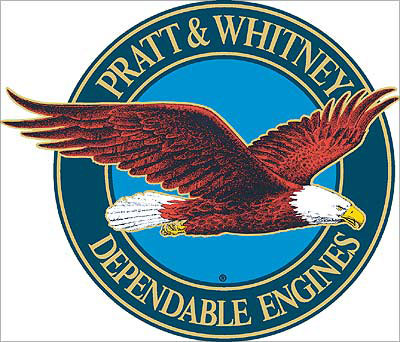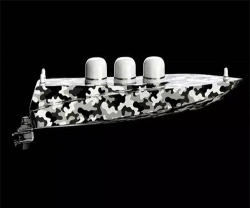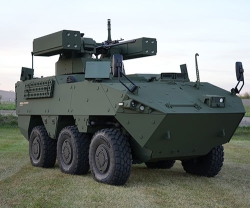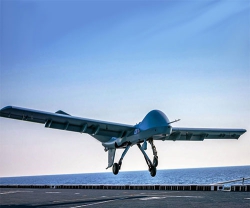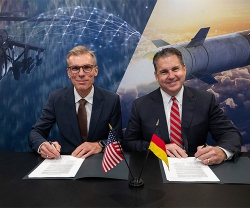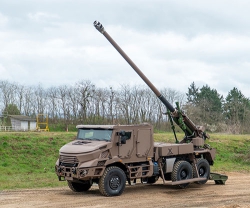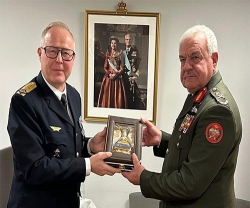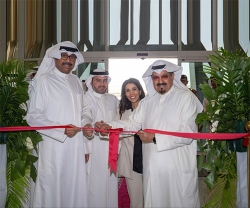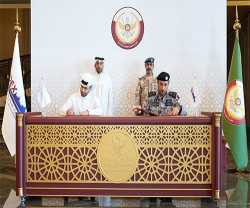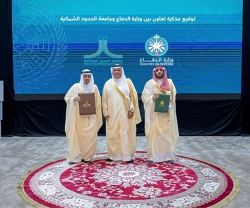P&W to Develop Advanced Variable Speed Turbine
29.11.2012 North America
Pratt & Whitney, a unit of United Technologies Corp., has been awarded a contract by the U.S. Army to research and develop an Advanced Variable-Speed Power Turbine (AVSPOT) to meet the range and lift requirements for current and future force rotorcraft.
The AVSPOT program is an initiative by the U.S. Army's Aviation Applied Technology Directorate, in collaboration with NASA, to develop turbine technology that improves performance, efficiency, and affordability of rotorcraft engines, and to validate that technology in a laboratory environment by 2016.
Although future mission requirements are still being considered, the program aims to develop a power turbine that would allow future medium as well as large rotorcraft to hover at up to 10,000 ft and cruise at up to 25,000 ft altitude while maintaining high operating efficiency. Whereas current state of the art power turbines operate in the 95-105 percent speed range, AVSPOT is intended to allow rotorcraft to optimize power turbine speed in the range of 55-105 percent while optimizing fuel consumption, cost, weight and durability.
There are significant challenges to enabling the higher power and rotor speed needed for takeoff and climb, as well as slower optimized rotor speed at cruise. To address these challenges, Pratt & Whitney is pursuing a technological approach that reduces the speed of the power turbine while optimizing its efficiency.
“Pratt & Whitney looks forward to participating in the AVSPOT program, and we're confident we will be able to meet the mission profile requirements needed for future rotorcraft engines,” said Annette Jussaume, General Manager, Small Military Engines.
“We have the technology know-how that will allow us to develop an efficient high-power turbine that can operate over a wide range of engine speeds,” she added.
The AVSPOT program is an initiative by the U.S. Army's Aviation Applied Technology Directorate, in collaboration with NASA, to develop turbine technology that improves performance, efficiency, and affordability of rotorcraft engines, and to validate that technology in a laboratory environment by 2016.
Although future mission requirements are still being considered, the program aims to develop a power turbine that would allow future medium as well as large rotorcraft to hover at up to 10,000 ft and cruise at up to 25,000 ft altitude while maintaining high operating efficiency. Whereas current state of the art power turbines operate in the 95-105 percent speed range, AVSPOT is intended to allow rotorcraft to optimize power turbine speed in the range of 55-105 percent while optimizing fuel consumption, cost, weight and durability.
There are significant challenges to enabling the higher power and rotor speed needed for takeoff and climb, as well as slower optimized rotor speed at cruise. To address these challenges, Pratt & Whitney is pursuing a technological approach that reduces the speed of the power turbine while optimizing its efficiency.
“Pratt & Whitney looks forward to participating in the AVSPOT program, and we're confident we will be able to meet the mission profile requirements needed for future rotorcraft engines,” said Annette Jussaume, General Manager, Small Military Engines.
“We have the technology know-how that will allow us to develop an efficient high-power turbine that can operate over a wide range of engine speeds,” she added.
Previous PostLockheed Martin Tests New Ground-Based Laser
Latest news
Latest events
Dubai International Air Chiefs’ Conference (DIACC 2025)
16 Nov 2025Atlantis, The Palm Dubai - United Arab EmiratesDubai Airshow
17 - 21 Nov 2025Dubai World Central (DWC) - United Arab EmiratesEgypt Defence Expo (EDEX)
01 - 04 Dec 2025Egypt International Exhibition Center New Cairo - EgyptDoha International Maritime Defence Exhibition & Conference (DIMDEX 2026)
19 - 22 Jan 2026Doha - Qatar

